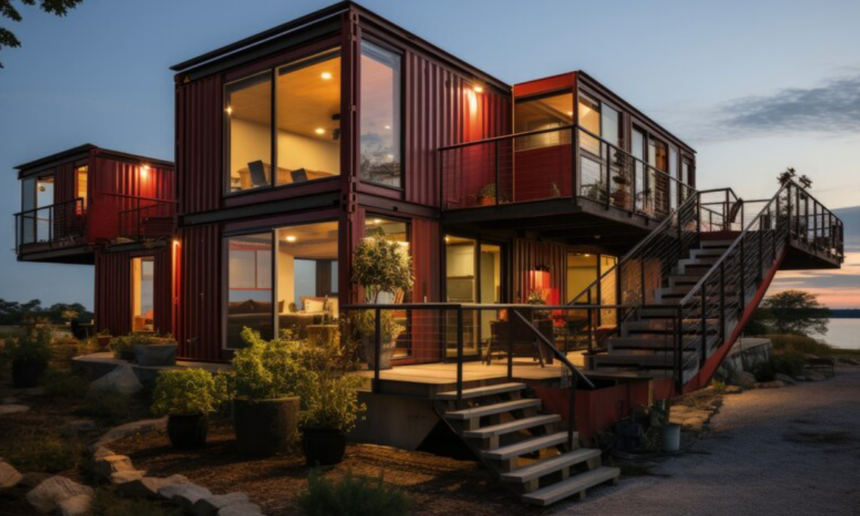In a world where excess seems to be the norm, embracing minimalism offers a refreshing alternative—a way of living that prioritizes simplicity, functionality, and mindful consumption. Compact homes, characterized by their small footprint and efficient use of space, are at the forefront of the minimalist movement, offering homeowners the opportunity to live with less while enjoying a higher quality of life. In this comprehensive guide, we’ll explore the principles of minimalism, the benefits of compact homes, and provide practical tips for designing, building, and living in these thoughtfully crafted spaces.
Understanding Minimalism: A Way of Life
Minimalism is more than just a design aesthetic—it’s a philosophy that extends to all aspects of life, from the physical environment to personal belongings and daily habits. At its core, minimalism is about:
- Simplicity: Simplifying your life by removing clutter, distractions, and excess possessions that no longer serve a purpose or bring joy.
- Intentionality: Being intentional and mindful about what you bring into your life, focusing on quality over quantity and prioritizing experiences over material possessions.
- Functionality: Choosing objects, spaces, and activities that serve a practical purpose and enhance your well-being, rather than adding unnecessary complexity or stress.
- Freedom: Finding freedom and liberation in living with less, allowing you to focus on the things that truly matter and bring fulfillment and joy.
By embracing minimalism, you can create a more intentional, meaningful, and fulfilling life that aligns with your values and priorities.
The Benefits of Compact Homes
Compact homes embody the principles of minimalism, offering a range of benefits for homeowners who choose to embrace this lifestyle, including:
- Sustainability: Compact homes require fewer resources to build and maintain, resulting in reduced environmental impact and a smaller carbon footprint.
- Affordability: Smaller homes are generally more affordable to build, purchase, and maintain, making them accessible to a wider range of homeowners, including first-time buyers and those on a limited budget.
- Efficiency: Compact homes are designed to maximize space efficiency and functionality, making the most of every square foot to accommodate essential living spaces and amenities without wasted space.
- Simplicity: Living in a compact home encourages simplicity and minimalism, as it necessitates careful consideration of what possessions and belongings are truly necessary and meaningful.
- Flexibility: Compact homes offer greater flexibility and adaptability, allowing homeowners to live more lightly and move more easily, whether it’s downsizing, relocating, or embracing a nomadic lifestyle.
- Connection to Nature: Many compact homes feature thoughtful design elements that promote a closer connection to nature, such as large windows, outdoor living spaces, and sustainable materials, enhancing the overall sense of well-being and connection to the environment.
By embracing the benefits of compact homes, homeowners can create a more sustainable, affordable, and fulfilling way of living that aligns with their values and priorities.
Designing Compact Homes: Key Principles and Considerations
Designing a compact home requires careful consideration of space, function, and aesthetics to maximize efficiency and comfort. Here are some key principles and considerations to keep in mind:
- Functional Layout: Prioritize functionality and efficiency in the layout of the home, organizing spaces to minimize wasted space and optimize flow and circulation.
- Multi-Purpose Spaces: Design multi-purpose spaces that can serve multiple functions to maximize flexibility and adaptability. For example, a living room can double as a home office or guest bedroom with the use of a convertible sofa or murphy bed.
- Storage Solutions: Incorporate ample storage solutions to minimize clutter and maximize usable space. Utilize built-in storage, hidden compartments, and vertical storage solutions to make the most of every inch.
- Natural Light and Ventilation: Maximize natural light and ventilation throughout the home to create a bright, airy, and inviting living environment. Use large windows, skylights, and clerestory openings to bring the outdoors in and enhance the sense of space and connection to nature.
- Flexible Furniture: Choose furniture that is flexible, modular, and space-saving to adapt to the changing needs of the home. Consider pieces that can be easily moved, folded, or reconfigured to accommodate different activities and lifestyles.
- Outdoor Living Spaces: Extend the living space outdoors with thoughtfully designed outdoor areas such as patios, decks, or rooftop gardens. Outdoor living spaces provide additional room for relaxation, entertainment, and connection with nature, expanding the perceived size of the home.
- Sustainable Design Features: Incorporate sustainable design features and green building practices into the construction of the home to minimize environmental impact and reduce utility costs. This includes energy-efficient appliances, solar panels, rainwater harvesting systems, and passive heating and cooling strategies.
By applying these principles and considerations, homeowners can design compact homes that are efficient, comfortable, and reflective of their minimalist lifestyle.
Building Compact Homes: Materials, Techniques, and Construction Practices
Building a compact home requires careful attention to materials, techniques, and construction practices to ensure efficiency, durability, and sustainability. Here are some key considerations for building compact homes:
- Appropriate Materials: Choose materials that are durable, low-maintenance, and environmentally friendly. Opt for sustainable materials such as reclaimed wood, recycled metal, bamboo, and eco-friendly insulation to minimize environmental impact and enhance indoor air quality.
- Efficient Construction Techniques: Utilize efficient construction techniques such as prefabrication, modular construction, and panelized construction to minimize waste, reduce construction time, and optimize resource utilization.
- Energy-Efficient Design: Design the home to be energy-efficient, with features such as high-performance insulation, energy-efficient windows, passive solar design, and efficient heating and cooling systems to reduce energy consumption and utility costs.
- Water Conservation: Incorporate water-saving features such as low-flow fixtures, rainwater harvesting systems, and drought-tolerant landscaping to minimize water usage and promote sustainability.
- Quality Craftsmanship: Ensure that the home is built to the highest standards of quality and craftsmanship, with attention to detail and precision in construction. Quality craftsmanship ensures the durability, longevity, and performance of the home over time.
By employing appropriate materials, techniques, and construction practices, homeowners can build compact homes that are sustainable, efficient, and resilient, reflecting their commitment to minimalism and environmental stewardship.
Living in Compact Homes: Tips for Embracing Minimalism and Maximizing Space
Living in a compact home requires a shift in mindset and lifestyle to embrace minimalism and make the most of limited space. Here are some tips for living in compact homes:
- Declutter Regularly: Regularly declutter and streamline your possessions to minimize clutter and create a sense of space and tranquility. Keep only the items that are essential, meaningful, and bring joy.
- Optimize Storage: Make use of every available inch of space for storage, including under-bed storage, wall-mounted shelves, and built-in cabinets. Utilize vertical space and hidden storage solutions to maximize storage capacity without sacrificing floor space.
- Multi-Functional Furniture: Invest in multi-functional furniture that serves multiple purposes to maximize versatility and flexibility. Choose pieces that can be used for seating, storage, or sleeping to adapt to different needs and activities.
- Scale Down Possessions: Scale down your possessions to fit the size and scale of your home. Choose smaller, space-saving appliances, furniture, and decor that are proportional to the size of the space and minimize visual clutter.
- Create Zones: Define distinct zones within the home for different activities and functions, such as sleeping, working, and dining. Use rugs, furniture arrangements, and lighting to delineate spaces and create a sense of separation and organization.
- Maximize Natural Light: Maximize natural light and ventilation to create a bright, airy, and inviting living environment. Keep windows unobstructed, use light-colored finishes, and strategically place mirrors to reflect light and create the illusion of space.
- Bring the Outdoors In: Embrace nature and bring the outdoors into your home with indoor plants, natural materials, and biophilic design elements. Connecting with nature enhances well-being and creates a sense of harmony and balance in compact living spaces.
By incorporating these tips into your daily life, you can embrace minimalism and maximize space in your compact home, creating a peaceful, functional, and harmonious living environment.
Conclusion
Compact homes offer a compelling alternative to the excesses of modern living, promoting simplicity, sustainability, and mindful consumption. By embracing minimalism and designing, building, and living in compact homes, homeowners can create a more intentional, meaningful, and fulfilling way of life that aligns with their values and priorities. With careful consideration of design principles, construction techniques, and lifestyle habits, compact homes can provide a sanctuary of simplicity and tranquility, allowing homeowners to live more lightly, consciously, and joyfully in harmony with themselves and the world around them.



